Part I: Introduction
Part II: Rockets, Jerusalem, and the Kelev
Part III: The Incomparable Boaz Shalgi
Part IV: Sacrifice and Courage at Masada, Qumran, and the Dead Sea
Part V: Between Two Caesareas

The Synagogue at Capernaum
First, a bit of technical difficulty. I recently purchased a pretty amazing little camera, the Fuji X10 for use on my fun little trips I take around the world (sneak preview: my next trip report is of my First Class adventure to Vietnam). I adore this camera, it’s equal parts easy to use, idiot-proof, and has protection against idiots. I consider myself a bit of a photodiot, so I went to one of the best in the business, my good friend Brian Braun (www.brianbraun.net), and asked his advice. He said without a doubt the X10 would be perfect, and it has been. with one exception. I love that I can adjust the exposure on the fly with a little dial on the camera, but on our last day in Israel, the dial found itself darkening every picture and I didn’t realize until most of the day was gone. So the pictures you see today will be artificially brightened a bit, and I learned a valuable lesson about constantly checking my settings on the camera to make sure this doesn’t happen again.
Our day began on Shabbat in Jerusalem. We met up with Boaz at the appointed time, and began making our way north. Our route would first take us through Tel Aviv to a coastal town called Caesarea. It is an active archaeological site, with new items being discovered with great regularity (it is said it is only 10% uncovered). It is an absolutely massive site, of which we were able to explore quite a bit.
Caesarea

The Theatre, overlooking the Mediterranean Sea
Caesarea was built halfway between what is now Tel Aviv and Haifa by Herod the Great just before Jesus’s time. It was built to honor Caesar Augustus and also serve as home to a very large palace for himself. It was an important city to Rome, with a very large harbor (I think one of the 5 largest in the world at the time). They had a large array of buildings, some of which have been uncovered today, and others lost to antiquity. But the remaining buildings are pretty incredible.

The Hippodrome
The Hippodrome was a very large area where they held horse races, gladiator games, and public executions. It held up to 20,000 people (who would end up being Roman soldiers and Gentiles most of the time, as it was mainly Jews being executed and other Jews weren’t really excited about witnessing that). Something interesting Boaz pointed out to us is the outcropping in the middle of the oval (just above center in the above picture) is where Roman officials would sit and witness executions, but it wasn’t always that way. In the beginning, they sat on the last turn of the oval, because that’s where the most chariot crashes would occur, not unlike NASCAR today!
Caesarea is the city from which Pontius Pilate governed Judea, and an unbelievably important piece of history was uncovered here.

The only archaeological proof that Pontius Pilate existed, outside of the Bible
Additionally, Paul the Apostle, who was a Roman citizen, in Acts 25:11 appealed to the rule of Caesar to be tried as a Roman citizen instead of as a Jew before the Sanhedrin, and he was held for two years at Caesarea.

Prison were Paul was likely held
In addition to the Christian history, the place itself is full of Roman history as well. As you’re walking around, what at first site appears to be rocks upon further inspection turn out to be bits of ancient pottery and mosaic stone. You’re literally walking on history. The palace was impressive as well.

Mosaic floor near Herod’s pool that was just discovered a few months ago!
Mount Carmel
1 Kings 18:16 tells the story of Elijah and the prophets of Baal and Asherah, two false gods the Israeli people worshipped at the time. Elijah had King Ahab assemble the people of Israel and the 850 priests to the false gods on Mount Carmel. Two bulls were found and made to be offered: Elijah’s bull to the God of Israel and the other to be offered to Baal or Asherah. Each would be placed on an altar, and the true God would set the altar alight for the sacrifice.
Elijah sat confidently while the prophets of Baal prayed and called upon Baal to light the altar, even mockingly asking them to yell louder, since their God might be asleep or traveling! Nothing happened for the Baal priests. Elijah had his altar doused with water from four massive jugs three different times, called upon the name of the God of Israel, and the altar was completely consumed with fire!
Present day Mount Carmel is actually quite large, not in height but in breadth, containing 11-12 big hilltops that together make up Mount Carmel. From the peak of the highest hill, you can see down into the Jezreel Valley and into the hills of Northern Israel.

Jezreel Valley, where the Battle of Armageddon will be fought
In the distance of the above picture is an Israeli Air Force airfield. When Lebanon surprise-attacked Israel in 2006, Boaz was with a tour group at this very spot, discussing Armageddon, when all of a sudden jet after jet flew overhead, loaded with missiles for a counterattack against Lebanon. He said the jets were so low you could almost jump up and grab them, which had to be a bit off-putting for those on the tour!
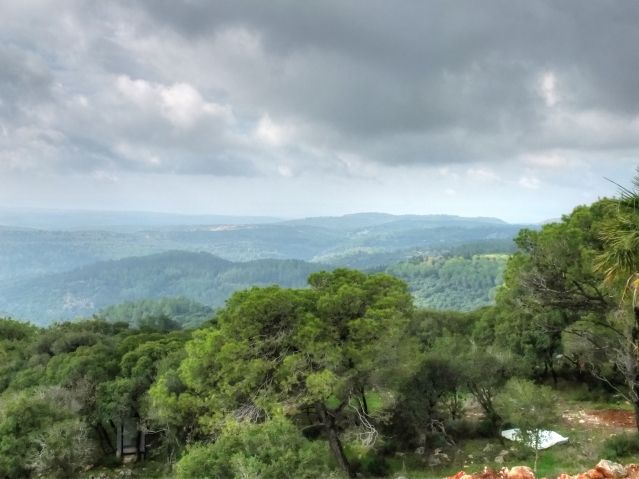
Another view from Mount Carmel
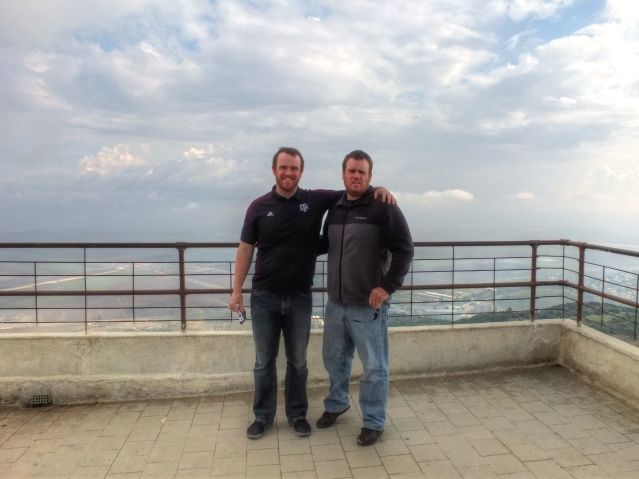
My brother and I
From Mount Carmel, we proceeded onward into Galilee, towards Capernaum.
Capernaum
Capernaum is a very important site for Christianity, as it is the home of the Apostle Peter and is where a significant part of Jesus’s ministry took place.
Peter’s home is a bit of a conundrum. It is 100% verified that Peter lived here, but to commemorate it a church was built literally on top of it about 30 years ago. Most buildings of this sort in Israel are built in alignment with the surrounding scenery or geography of the area, but this was not anything like that, it was modern, ugly, and ruined the site in a way. If any of you have ever driven into LAX and have seen the UFO-looking thing at the front, the church resembles that.

Peter’s home, with the church pillars annoyingly hovering overhead
From Peter’s home it is a short walk over to the synagogue (reference the very first picture in this post for a look at the synagogue). What is especially significant about the synagogue is what was uncovered beneath the limestone floors: the original floor of the synagogue, from Jesus’s time (you can see below it is volcanic rock, which is the geologic heritage of the area). Why is this important? Jesus most likely walked on these stones while ministering at the synagogue.

Original synagogue floor
On our way out from Capernaum, we stopped for a brief visit to the legendary Jordan River. Now, growing up reading bible stories about the Jordan River I somehow pictured the roaring Mississippi in the USA, but reality was a little, well, underwhelming.
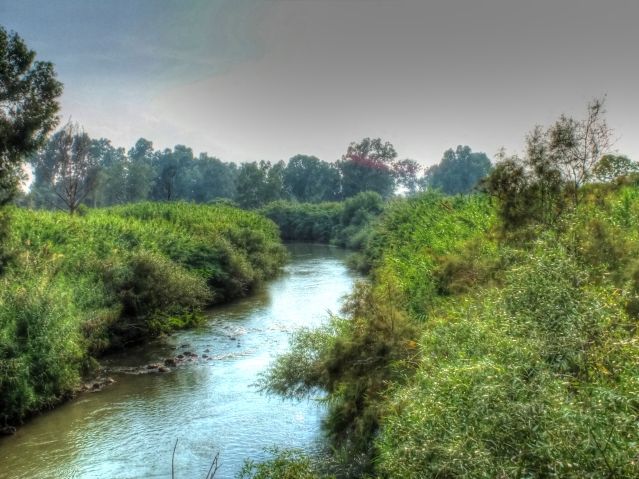
The Mighty Jordan River
Many people have asked me what the topography is like in Israel. I don’t think I was alone when I imagined very sparse vegetation amid desert conditions, but in the north I was blown away at how beautiful everything was, and we eventually found ourselves driving through a forest not unlike what you’d expect to see in northern California
The Valley of Tears
The gravity of the situation increased as we approached the Valley of Tears and the Syrian border. The Valley of Tears is the site of one of the largest tank battles in recorded history during the Yom Kippur War in 1973. Most tanks were destroyed, and the shells of a few are left as a memorial to the heroism and tenacity of the Israeli soldiers during the battle.

Israeli tank eternally standing guard. The town in the distant background is in Syria.
It was at the Valley of Tears that we heard a very moving memorial to the soldiers who fought, including actual radio transmissions heard during the battle. Boaz eloquently painted a picture of what occurred here, it was very emotional and hearing it firsthand from a 22-year veteran of the IDF made it that much more special. Heroism and struggle, you’re never far from either here.

The Kelev on the lookout. In the background is a massive mine field. We all kind of wanted to “accidentally” forget the handbrake and let it roll back into the field.
From the Valley of Tears, we passed through a few Druze villages, then headed to Caesarea Philippi.
Caesarea Philippi
What is now just an archaeological site in the extreme north of Israel (literally a few hundred yards from the Lebanon border, which we drove next to on our way out) used to be a city and temple complex to the pagan god Pan. It has a few nice springs that feed the Jordan River.
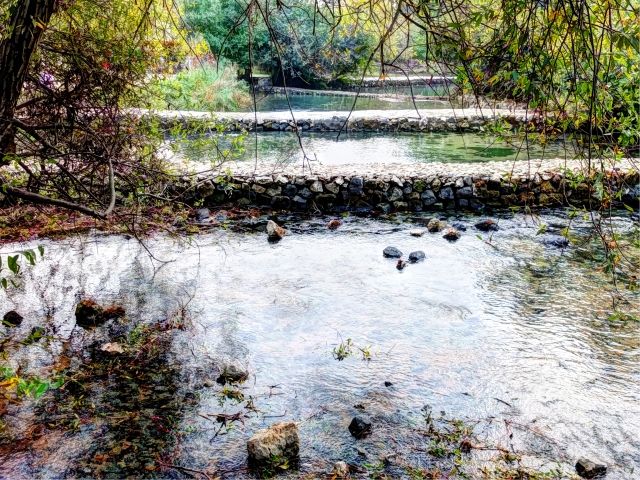
Springs at Caesarea Philippi
Matthew 16:18 tells the story of Jesus and Peter at Caesarea Philippi, when Peter confesses Jesus at the Christ. Jesus then tells Peter “you are Peter, and on this rock I will build my church, and the gates of hell shall not prevail against it.” This is the huge massive rock face at Caesarea Philippi that Jesus most likely used as his backdrop for what he was saying (apologies for the psychadelic-looking picture, got a little crazy with the HDR software)
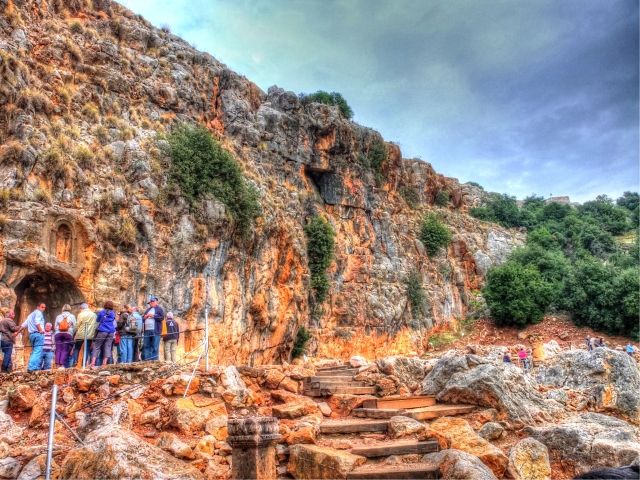
Rock face at Caesarea Philippi
Also at Caesarea Philippi we ran into some of the cutest little creatures imaginable: marmots. These little guys are about as cute as can be, and look like a gerbil that’s about the size of a cat. We saw a family of them on the path ahead, and I tried to guess the noise they made to win their favor (which consisted of me saying “MARMOT!”), but to no avail, they ran away frightened. Although I guess if someone ran up to me yelling MARMOT I’d do the same thing.

Bill the Marmot with his family…awwwwwwwwwwwwww
Wrapping Up
This was unfortunately the end of our tour with Boaz, and, as our trip was drawing to a close, we were left with some fantastic views of the Sea of Galilee as we headed to Tel Aviv.

Sea of Galilee
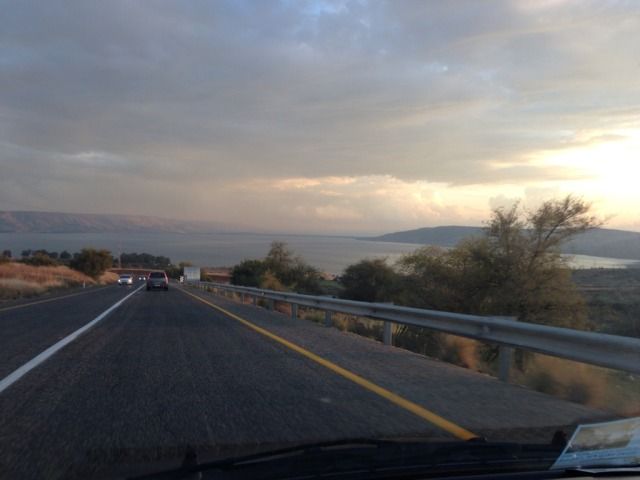
Incredible view on an incredible road
As we bid farewell to Boaz, and to the northern part of Israel, I was left with two emotions: sadness at leaving such a beautiful place, and hope that I’d soon return. I will see Boaz again, I will visit this beautiful place and people again, and I will continue to learn from their strength and resiliency.


Trackbacks/Pingbacks